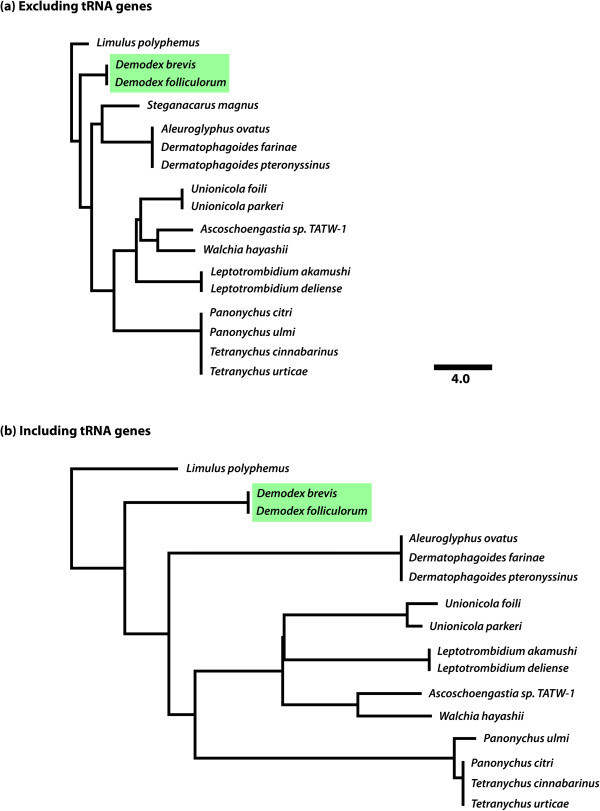Figure 3.

Tree showing the breakpoint distances between gene arrangements. Distances on this tree represent the minimum numbers of breakpoints necessary to transform one gene arrangement into another for all pairwise species comparisons. Limulus polyphemus (the horseshoe crab) is considered to represent the ancestral gene arrangement, since it has a gene order that is shared broadly across the chelicerates. In panel (a), only the arrangements of protein-coding and rRNA genes were considered. In panel (b), all mitochondrial genes were considered, including tRNA genes. Both trees are drawn to the same scale. All of the Acariformes have gene arrangements that have diverged substantially from that of L. polyphemus, and the tRNA genes have experienced substantially more rearrangements than the protein-coding or rRNA genes in all lineages. Both Demodex species shared an arrangement that is closer to the chelicerate ancestral arrangement than any other acariform species sequenced to date.
